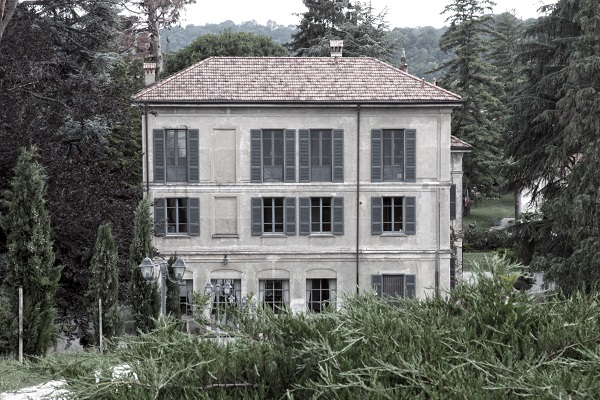Since the end of the 17th century, the place where Villa Lucini stands today belonged to the nobleman Innocente Gemelli.
"In 1692, Monticello was granted as a fief to the nobleman Bartolomeo Gemelli, who established a residence next to the church of San Rocco in a U-shaped building (now Villa Gerli, Editor's Note) with a courtyard facing the street and an extensive Italian garden, created by his son Innocente."
(from Angelo Borghi, Il medio corso dell'Adda. Sacralizzazioni strutture della memoria, Oggiono, Cattaneo, 1999, p. 91.)
The Teresian Cadastre or "Carlo VI" Cadastre (in German Mailänder Kataster, meaning Milanese cadastre) of 1721 represents the land properties of the Duchy of Milan, clearly indicating the perimeter of the land that would later become Villa Lucini.
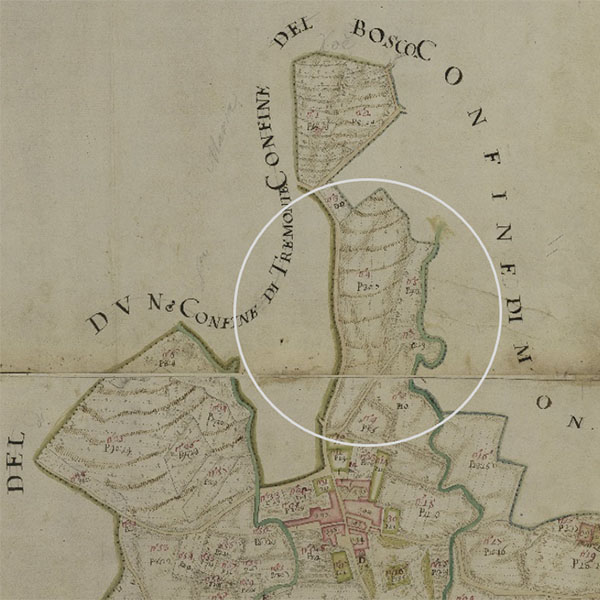
The Lombard-Venetian Cadastre, 1857
The Kingdom of Lombardy-Venetia was a state under the control of the Austrian Empire, conceived by Chancellor Klemens von Metternich at the beginning of the Restoration period following the collapse of the Napoleonic Empire. Its establishment was confirmed in 1814 by the Congress of Vienna.
In the 1857 Lombard-Venetian Cadastre, the initial structures of the Villa Lucini estate can be seen.
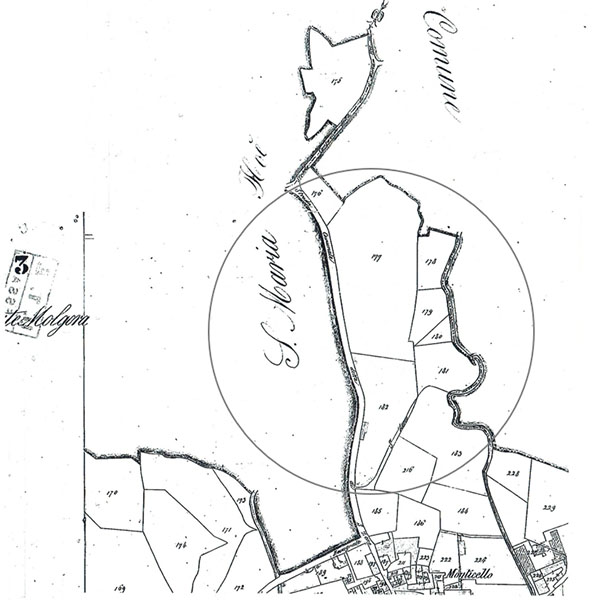
On October 29, 1886, Caterina Voltolina (widow Boselli) purchased "certain buildings in the municipalities of Olgiate Molgora and Cagliano" from the Torri brothers, Bartolomeo and Caterina.
The sale was then formalized by Notary Alessandro Galli of Merate on December 12, 1886. Caterina Voltolina was represented by her attorney, Felice Boselli (son of Ambrogio).
Among the properties acquired by the widow Boselli was the one described in the old census as "Ronco dello Rogolone," which corresponds to the land containing Villa Lucini, the annex, and the Belvedere.
In the ancient dialect of Brianza, "Rogolo" means oak, and it is highly likely that "Rogolone" referred to the centuries-old sequoia that can still be admired in the park area adjacent to the entrance of Villa Lucini.
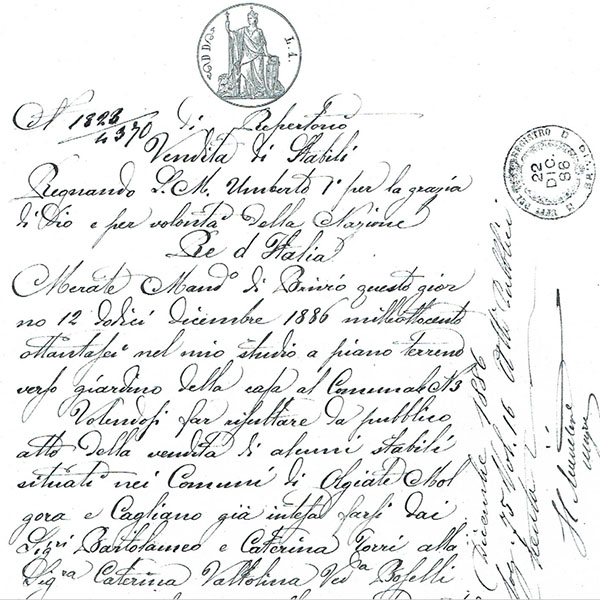
On May 1, 1888, two years after the first purchase by the widow Boselli, Boselli Felice (son of Ambrogio) and Carlo Pellizzoni entered into a private agreement whereby Pellizzoni sold to Boselli "the piece of land called Il Brugolone in the municipality and territory of Olgiate Molgora." This corresponds to the wooded hill and flat meadow in the northern part of the park surrounding the present-day Villa Lucini (land plot 177).
The toponym "Il Brugolone" derives from the medieval Latin term "Brugarium," which indicates the presence of clayey soil where shrubs predominantly grow. This term is related to the word "brughiera" (heath).
It is interesting to associate the root "Brug" with the Gaulish term "Brig," meaning hill or height. This leads to the hypothesis that the name "Brianza" itself derives from "brig."
In the past, the lands of Brianza were wild and frequented by outlaws, hence the still-used terms "briccone" (rogue) and "brigante" (bandit). We can also find the word "Brig" as a suffix, ending, or part of terms like Britannia, Insubri, Briançon (ancient Brigantium), Bregaglia, Brughiera, Bergamo (Berg-Comum), and in the Brianza dialect, "Bergamin," which means "man of the mountains."
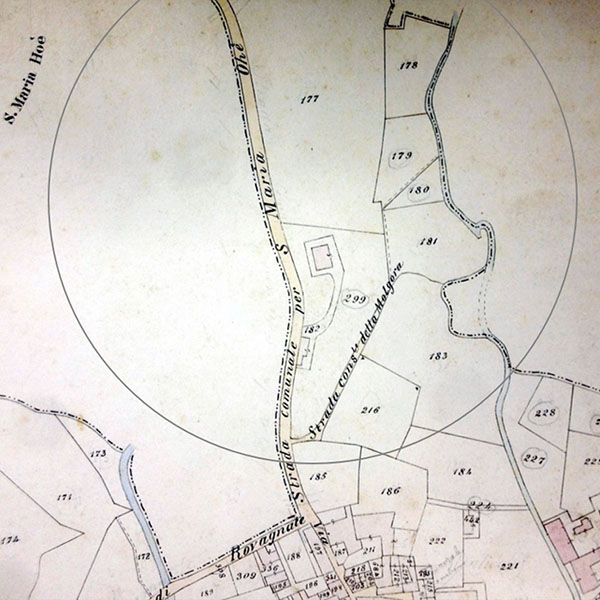
The Cessato Catasto of 1898, in sheets fg. 1 and 3, attests that around the end of the 19th century, the Dependance building was expanded with the addition of the South wing, assuming the configuration that still characterizes it today. It can also be noted that during the same period, the Belvedere terrace and the woodshed below it were constructed to the South of the estate.
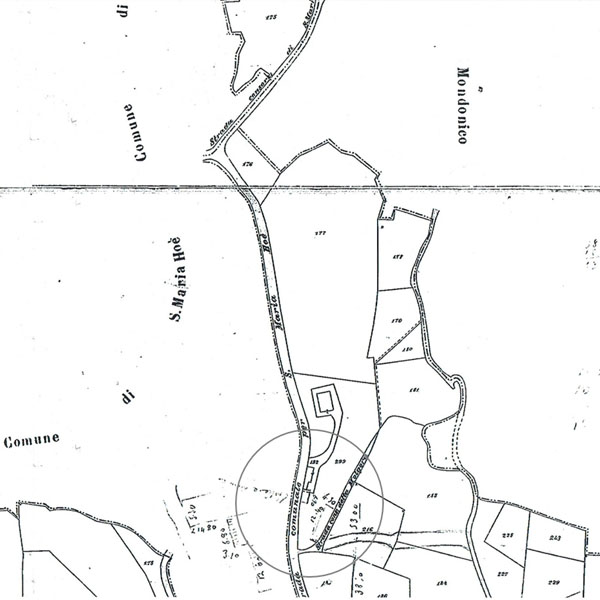
On July 9, 1906, the widow Boselli passed away. Boselli Felice (son of Ambrogio) became the sole owner of the entire real estate complex.
In the second half of the first decade of the 1900s, there was an expansion of the main building (the Villa) with the addition of a two-story rectangular structure on the North side of the original building. During the same period, the construction of the "Belvedere" terrace and the woodshed below it to the South of the estate was also carried out.
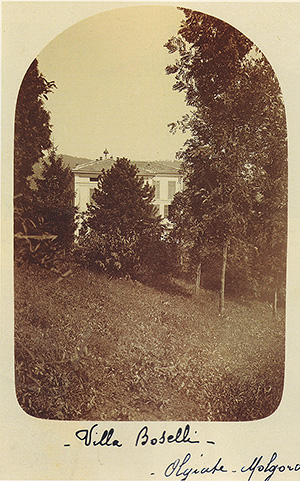
The elderly Mrs. Caterina Voltolina (widow Boselli), tired of the local parish priest's refusal to celebrate Mass at her residence, promoted the construction of a new church adjacent to the Villa, which would be within a short walking distance for her. Only the Great War (World War I) halted the advanced works of the new church, which was later completed thanks to the efforts of her daughter Ida Boselli, along with Mrs. Sala and Mr. Calcaterra, who facilitated its completion in 1919 (census of cultural assets in Lombardy: http://www.lombardiabeniculturali.it/architetture/schede/LC120-00208/).
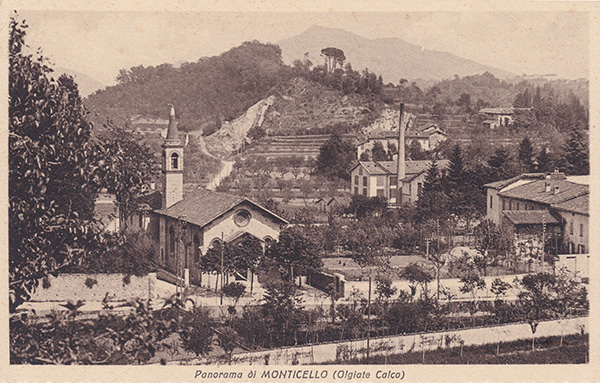
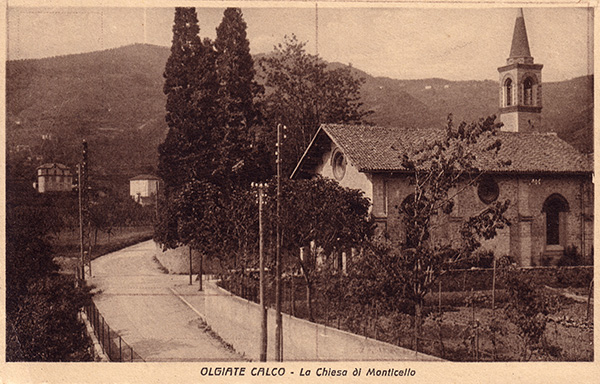
On April 29, 1941, through deed number 12895 executed by notary Carpani of Milan, the villa, buildings, and adjoining lands (map numbers 182, 299, 871), as well as the hill in map number 177, were transferred to the Benedictine nuns, specifically to the Monastery of San Benedetto delle Monache Adoratrici Perpetue del Santissimo Sacramento located in Milan at Via Bellotti 10. The legal representative of the moral entity on that day was Sister Giuditta Ferrari, daughter of Daniele.
On July 16, 1954, at the office of notary Gallavresi in Milan, under entry number 12606 in his register, the MONASTERY OF SAN BENEDETTO sold the entire property, with the exception of the parcels outside the enclosing walls, to Mrs. Francesca Crippa, daughter of Abele, married to Biffi.
Of note is a certificate attached to the deed, issued on September 10, 1954, by the mayor of Rocca, Giuseppe: "The Mayor certifies that the Villa owned by the Monastery of San Benedetto delle Monache Benedettine Adoratrici Perpetue del Santissimo Sacramento, headquartered in Milan, located in this municipality, was commonly known and referred to as 'Villa di Monticello'."
Currently, Marco Lucini is the owner of the entire ancient estate, now known as "Villa Lucini."
